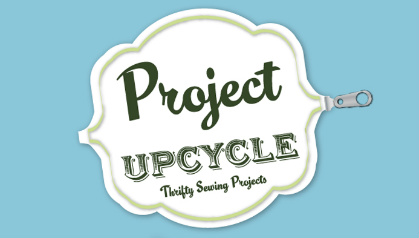Altering Clothing
Altering clothing, whether to resize or refurbish it with new buttons or embroidery, is a practical piece of knowledge with which to be familiar, as it is possible to greatly reduce the amount of money you spend on clothing.
By refashioning old clothing, you can transform unattractive garments into something fashionable, shirts and pants can be resized for longer wearing and seasonal clothes can be adapted to the current season.

However, one problem frequently encountered when altering clothes is the difficulty of the working with the fabric. Thick, stiff fabric may bend or break needles not meant for such material. Be sure you are using the correct needle size for the type of fabric you are using.
Repurposing clothing by taking out old stitches and cutting material such as leather, suede or stretchy fabric to change something about the piece may require special kinds of scissors, needles and thread.
Most new sewing machines provide settings to accommodate hard-to-manage fabrics. However, altering clothing does not have to be completely done with a needle and thread. Non-sewing repurposing ideas include:
- Using fabric paint
- Decorating with stencils
- Painting vertical or horizontal stripes on clothes for a funky look
- Using iron-on patches
- Removing sleeves
These simple suggestions extend the life of article of clothing while providing a fresh look to your wardrobe.
from: Craftsy
Redoing a Hem
Lowering or raising a hem is a common feature of altering clothing, since it is hard to even find new clothes that have correct hems correlating to the height of the individual purchasing the clothing. To redo a hem, take out the old hem first and press the crease out using an iron. If it is an older piece of clothing, the hem will probably show. To remedy this, dab some white vinegar on the crease, and then blot it with a damp cloth.
Begin by pinning the hem according to the correct measurements you have taken. Iron the hem again after it is pinned to put a new crease in the hem. Take the pins out and begin sewing by hand or with a machine.
Altering an Old Shirt
Here is a fun project for practicing with alterations. Take an over sized, long-sleeved shirt, one that reaches or goes past your thighs. Cut the sleeves off carefully with sharp shears, avoiding loose threads. Make the cut as neatly as possible.
Take in side seams enough to make the shirt fit you closer around the hips than it previously did. Sew on belt loops for a belt and it is done. You have just changed an old shirt into a funky new mini-dress.
Refashioning Sweaters
Another method for altering clothing is taking old sweaters and refashioning them into other useful pieces of clothing. Most sweaters can be transformed into scarves, leg warmers, handmade bags or different types of sweaters with scissors, a pattern and sewing machine. For example, to make a pair of leg warmers:
- Cut off the hem and sleeves of the sweater
- Trim the hem so that it matches the top of the sleeves
- Sew the hem to create a tube
- Sew decorations such as small buttons on the hem
The old piece of clothing is transformed to different but useful apparel.
Taking In and Out
Taking in a piece of clothing is easier than trying to make something bigger because you don’t have extra material to work with when trying to enlarge something. For example, when sleeves are too tight, sometimes all you can do is remove the sleeves. However, if something is too big, all you need to do is take out the stitching, remove excess material, put the garment on and have someone baste or pin to fit.
As an economically and environmentally friendly activity, learning the basics of altering clothing can lengthen the wear you receive from your favorite clothes as well as provide you with new and interesting ways to wear something well worn.
Return from Altering Clothing to Home





